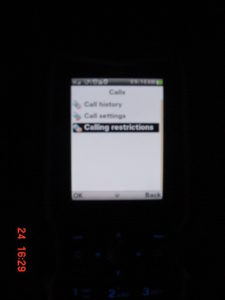 Non-geeks hear the phrase “regression testing” and do not know what it is. Regression sounds bad so why would anyone want to test making sure they achieved it? Many in IT will laugh at that last sentence thinking it a funny joke. Sadly, it is pretty much the exact truth. I’ll expound much more on this topic in a title called “The Phallus of AGILE and Other Ruminations” coming out within the next 18 months or so, but, here’s a wee bit about this process you hear of called AGILE.
Non-geeks hear the phrase “regression testing” and do not know what it is. Regression sounds bad so why would anyone want to test making sure they achieved it? Many in IT will laugh at that last sentence thinking it a funny joke. Sadly, it is pretty much the exact truth. I’ll expound much more on this topic in a title called “The Phallus of AGILE and Other Ruminations” coming out within the next 18 months or so, but, here’s a wee bit about this process you hear of called AGILE.
- AGILE exists to serve the singular purpose of committing accounting fraud without going to prison.
- Test Driven Development (TDD) generally doesn’t test shit. It just has to successfully get through Jenkins.
- Without an actual set of design documents you cannot regression test a design.
If you regularly read any of the blogs I write for you know that not long ago I purchased a pair of Sonim phones. A Bolt which is 3G and an XP5700 which is 4G. My flip phone was acting up, farm life was just too rough for it, so I wanted a rugged phone. After I purchased the Bolt and Consumer Cellular wouldn’t send me a T-Mobile SIM for a 3G phone, I purchased the XP5700. I really wanted to test the coverage difference between the two carriers. The end of 3G is coming and T-Mobile has already begun shutting down their 3G towers. My original SIM was an AT&T SIM which transfered over nicely to my Bolt. So far my only complaint with the Bolt is that you cannot software disable the Push-To-Talk (PTT) on the side. Nasty, useless feature and the button is in a bad place so it keeps getting bumped.
 These two phones are a classic example of why AGILE is a shit philosophy and illegal methodology. The Bolt has a handy little feature called Calling Restrictions. Hopefully you can read that menu option in the image. They didn’t take it to the next step adding a menu option in the called number list, but, I have adapted to writing down spam numbers then manually entering them into the Calling Restrictions list. Life is good. I went from 30-50 spam calls per week to about 2 using this feature. Most carriers charge you to block more than 10 numbers, and even then, you cannot block them for the life of your phone or contract. Usually only for a couple of months. I have no idea how many I can enter on this phone. I believe it is only limited by either the storage on the card of amount of free memory in the phone. It’s fantastic. Sadly, AT&T appears to be slowly disabling 3G service in my area. I see the phone go into “Emergency” network quite often now. It will go from 4 signal bars “CC Network” to “Emergency” in the blink of an eye. I’m beginning to believe I won’t get to use the phone until the end of 2019 as planned. (The end of 2019 is supposed to be the official end of 3G service nationwide.)
These two phones are a classic example of why AGILE is a shit philosophy and illegal methodology. The Bolt has a handy little feature called Calling Restrictions. Hopefully you can read that menu option in the image. They didn’t take it to the next step adding a menu option in the called number list, but, I have adapted to writing down spam numbers then manually entering them into the Calling Restrictions list. Life is good. I went from 30-50 spam calls per week to about 2 using this feature. Most carriers charge you to block more than 10 numbers, and even then, you cannot block them for the life of your phone or contract. Usually only for a couple of months. I have no idea how many I can enter on this phone. I believe it is only limited by either the storage on the card of amount of free memory in the phone. It’s fantastic. Sadly, AT&T appears to be slowly disabling 3G service in my area. I see the phone go into “Emergency” network quite often now. It will go from 4 signal bars “CC Network” to “Emergency” in the blink of an eye. I’m beginning to believe I won’t get to use the phone until the end of 2019 as planned. (The end of 2019 is supposed to be the official end of 3G service nationwide.)
Our shining example of why you cannot honestly perform regression testing without creating a full SDLC documentation set up front are the Sonim phones which came after. The XP5, XP6 and XP7 families. None of them have this feature. The phone line regressed despite all of the TDD and Jenkins test scripts because a bucket of user stories, the primary AGILE design “document,” is not a design specification. I have made multiple inquiries with technical support and finally, on July 3, 2018, got an official response. The only 4G Sonim phone to have the built in call blocking feature is the pricey XP8. I find this quite odd since, according to this article, any Android based phone should have the feature. It truly is a feature people cannot live without.
So now I’m poking around on-line. Looking for a rugged stick phone or flip phone which is 4G and has built in call blocking. Not one I have to install a nefarious third party app on, one with the feature built into the base software. No, I don’t want an idiot phone. I don’t want people texting me. Intelligent people don’t text. I great big touch screen or any of that. I write touch screen software and sure as hell don’t want a phone with a touch screen. If I want to use a touch screen I have more than enough of them lying around the office.
Oh, you may be wondering about the accounting fraud aspect behind AGILE. The primary reason companies around the world are flocking to it. The shot glass definition is that prior to Enron, policies and practices allowed companies to have software “evaluated” by accounting firms. These firms would place an unbelievably high “valuation” on the software while it was still being written. Eventually this morphed into accountants who were little more than line chefs, fry cooking the books each quarter. Companies would spend huge sums of money writing software which didn’t work and the accountants would book that expense in the asset column. As we learned with Enron and soooo many other companies, when the Jenga Finances came crashing down, nobody would spend a plug nickel to obtain this mega-million dollar “asset.”
Don’t worry, you will be able to personally experience Jenga Finances and the outlawing of AGILE globally with the next market crash. All of these famous Silicon Valley companies are embracing AGILE, pretty much for the accounting fraud. I don’t know which one will fall first, but, there is a long line of them playing Jenga with the books. Twitter is the most current, but, with the privacy issues and fines, Facebook cannot be far behind. People have been talking about the Silicon Valley financial problems since 2016. My personal opinion is that we are not too many months away from NASDAQ dropping below 2000.




